Genesis of Jekka: Building a Trekker story from the ground up.
I’m often asked at conventions and in interviews about different steps in my process of creating a Trekker story. So, here’s a run-down on how our current story, “Jekka”, came to be. And while each Trekker story– in fact, each Trekker page and panel– might come about in a slightly different way, the basic steps and stages are the same.
The Spark
Each Trekker story starts with a simple particle of some sort– a germ of an idea, concept or detail that I build from, usually in all directions. Sometimes it’s a single image or scene that will start the process, sometimes it’s a situation or an event: “Someone is blowing up buildings in New Gelaph” (Trial By Fire), or “Mercy crosses paths another Trekker” (Rules of the Game). Often, it’s a character as in the case with “Jekka”: Mercy meets a young woman in a predicament and gets involved in her adventure. And from that initial germ, I flesh out the tale in all directions: how do they meet, what’s the predicament, what lead up to their meeting, how does Mercy react, what complicates things, where is the tension and conflict, how does the story resolve, and–importantly– what’s the point of it all: does the story end by pushing Mercy farther on the path of her personal evolution? If not, I need a different story.
As you can see in the above sketch, the initial drawing, done many years ago for a family friend, simply put the characters on paper. Nothing of the attitudes, situations and drama– the actual story— was present yet.
The Story
One question I field fairly often is whether I write a script for Trekker stories, or just jump into the drawing. If Trekker was no more than an exercise in giving me fun things to draw, I might just make it up as I go along. But that sort of self-indulgent tale would grow old for me very quickly. Trekker is a series designed to trace the life and personal “evolution” of a character, and that requires planning, structure and care to give the over-all course of the series a shape, purpose and focus. Above are several stages of notes, outlines and script for Jekka. As any writer knows, the craft of writing is in the re-writing and the editing. I go through each Trekker story over several drafts, refining scenes, adjusting proportions, reworking dialog. There are a countless details and decisions to make in each story. And while trusting one’s impulses and instincts as a storyteller is vital in generating the initial ideas, it’s all this reworking and honing that will yield a tight, muscular story– no fat, no excess, no unnecessary detours. Only details that contribute to the tale and build the world convincingly. That’s your goal.
A note–Jekka is probably the last story where I will do some of the writing on paper: I’m making a habit of jotting things down digitally now. I find it less cumbersome. But there is something cool and visceral about moving the pen across a legal pad that I’ll miss. Also, you can see I would occasionally scribble a quick idea for a page layout on the script’s margins. That’s the only time where the “Artist” slips into what is otherwise the “Writer’s” exclusive territory during this stage of the work. More about the writer-artist interface below…
The Designs
While developing the story, I simultaneously work on some designs for it as they come to mind. Often, this is an extremely fun part of the job– one where I can let my imagination roam, where anything’s worth trying, and where I let some of the details of the story and also an over-all tone start to sink into my thinking. It informs everything that will follow.
Here is the stage where I take off the word-writer’s hat and don the visual-writer’s cap. At this point, I’m not an artist yet, I’m still a storyteller with the same goals as that of the writer: choosing details and shaping the scenes to tell the story clearly and compellingly. This has nothing to do with pretty drawings, and everything to do with serving the needs of the scenes: working out compositions for each panel that invite the reader in and tell the action in a clean, crisp way. Above is the thumbnail for this week’s page. It begins with quick, spontaneous scribbles in pencil and then just enough refining in marker to keep things clear enough for me to remember what they are supposed to be when I get back to turning them into pencil drawings.
It’s often at this stage where the visual side of me comes to tension with the word side. When I’m writing a script, my attention is on the ideas, concepts, pacing, character and dialog. In the back of my mind, I’m also usually keeping in mind what will work visually, how much story can a page, or a panel contain. But that doesn’t always prove true, and I end up creating some problems for the artist to solve. Sorry, artist-me.But story comes first, always.
Here’s where I slow down for the visual refinements and polish– the stuff that pleases the eye.The thumbnails are generally done quite quickly and spontaneously, with a sense of pacing and “story” at the forefront of my mind. Here at the pencil stage, I slow down for the craft of illustration– correcting perspective, which is just roughed in at thumbnails, construction of the figure drawing (the most essential tool a comic artist has), fleshing out the architecture and scenery to build a believable environment for the action, and the pure joy of drawing faces to convey personality, character and emotional content.
Some artists pencil their work so precisely that inking seems an almost superfluous step in the process of producing a page. But for me, particularly when I get to ink my own work, it gives me an extra stage to troubleshoot, correct and enhance the drawings. It’s often at this stage where I decide on shading, textural finish and so on. With Trekker, over the years I have moved away from a lot of rendering in gray values and surface textures for a more bold, clean look. Trying to achieve maximum effect with minimum fuss, which I believe is a pretty good definition of “mastery”. Not saying I’m there, but it’s what I strive for.
This is currently the most exciting stage for me, because it’s still very new territory. When I first returned to Trekker, I was blessed to have the awesome talent of Jeremy Colwell on the colors. Jeremy brought a terrific color sensibility to the world I was trying to create, one very much in keeping with my “vision” for the look and feel of Mercy’s world. And he also has a stunning array of techniques and deft touches at his disposal. In the future, I hope we can have Jeremy join us again, but in the meantime I’m soldiering along with the color myself, discovering little tricks and touches as I go. It’s a fun “learning curve” to negotiate. The unsung hero of this step is the talented Caitlin Like, who provides the color “flats” for me to work from. Flats are the initial stage where a base color is filled in for every discrete area of the page. It’s a technically demanding step, and one Caitlin can provide for me at lightning speed. She also does a terrific job of choosing initial colors for me. Often, I just take her color choices and tweak them in minor ways to harmonize with the over-all scheme of the page. Other times I’ll select one of her choices– say on a jacket for Mercy where I might decide on a brown rather that a gray hue– and change it at a “click”. Color is primarily about evoking a particular emotional tone in any scene or image. It’s Caitlin’s great initial work that frees me up to refine the pages to reflect the mood I have in mind. From there, it’s a matter of adding a few simple effects– a touch of shading here, a bit of texture on a surface there, to achieve a finished color image.
Lettering
Lettering is a skill step in its own right. Trekker was incredibly lucky to have the legendary Ken Bruzenak as the primary letterer for most of her first run, and for the recent “Avalon Bay” story as well. Handling the lettering myself now, I try to preserve as much of the sharp attitude and creative flare that Ken added to the series. You can judge the results by the finished page today and every Monday!
And that’s it– in a fairly simple form: my process for creating Trekker stories. It’s a completely involving, completely rewarding process for me. I’m still learning new things at every stage, and excited to share them with you on the new pages as Mercy’s stories continue to unfold!

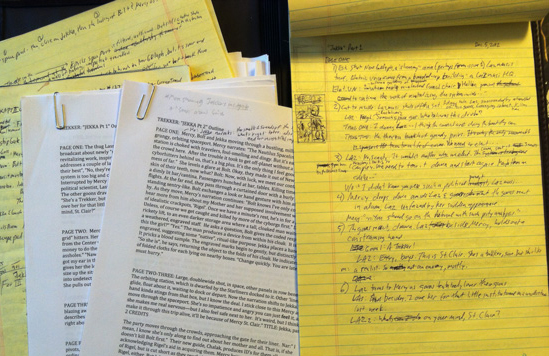
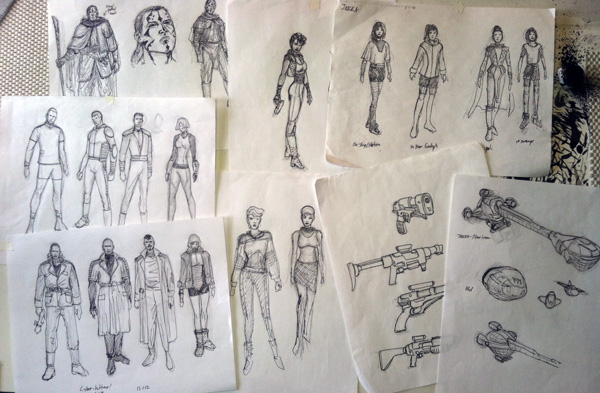
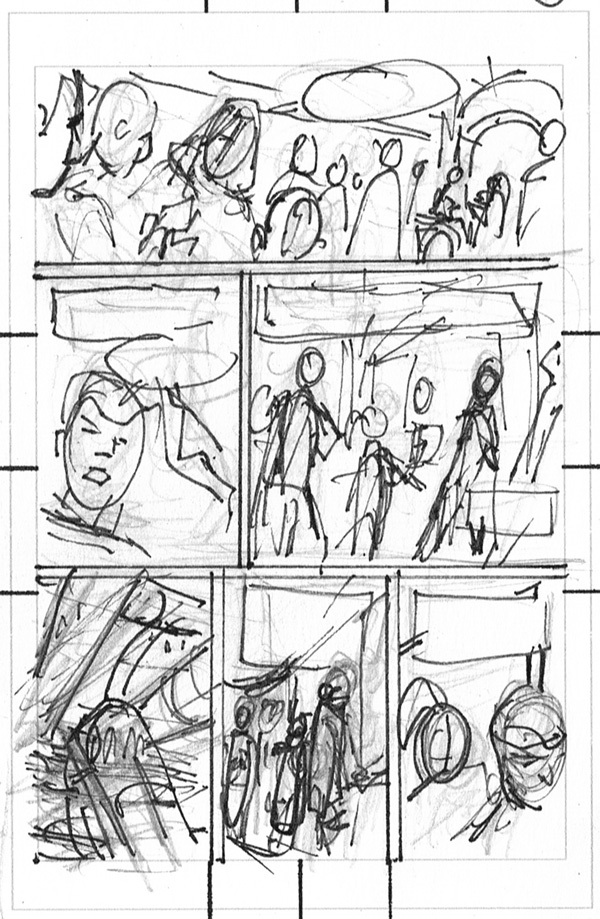
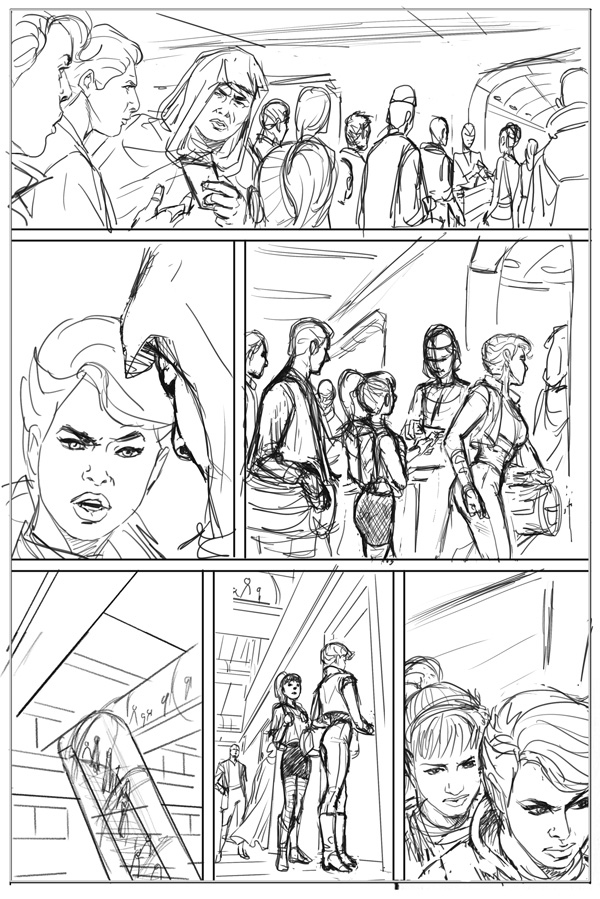
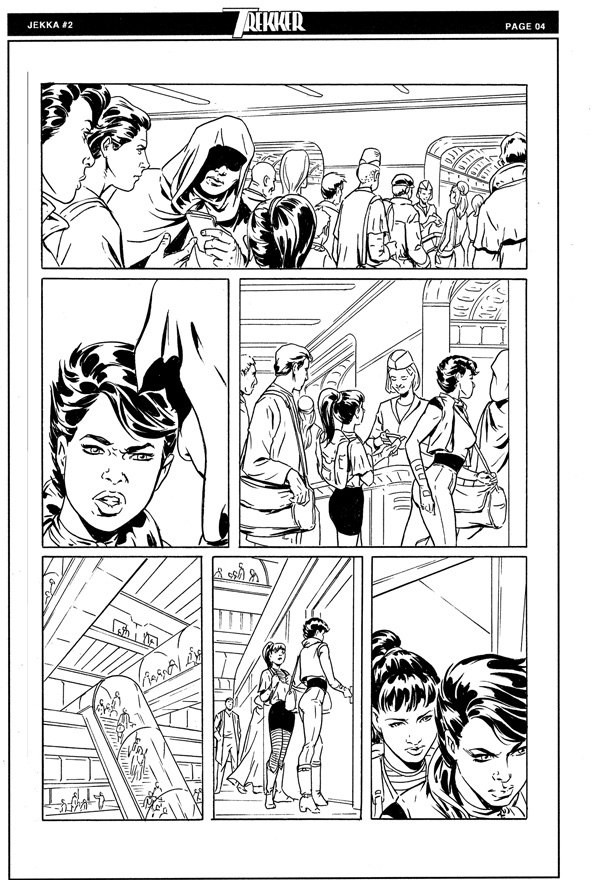
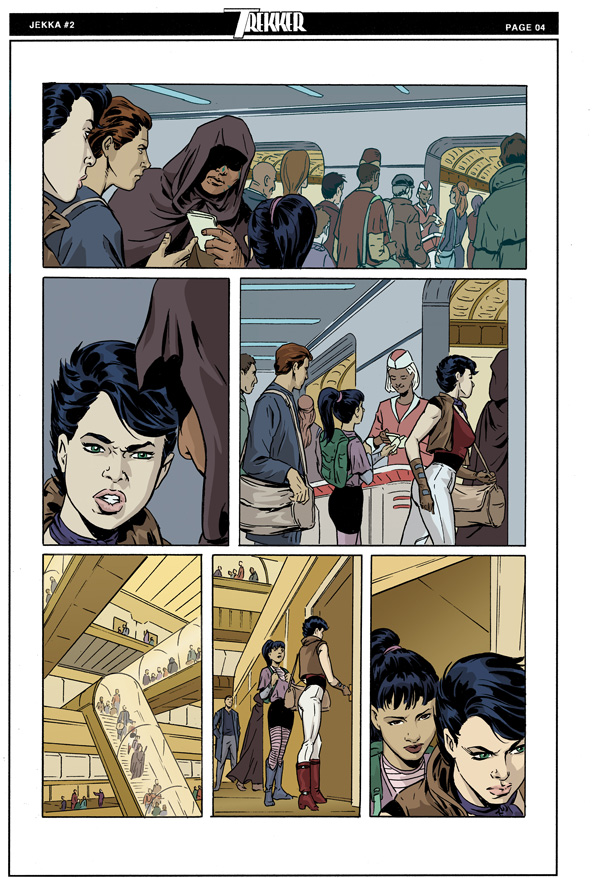
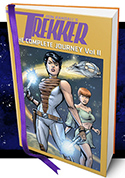

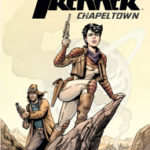
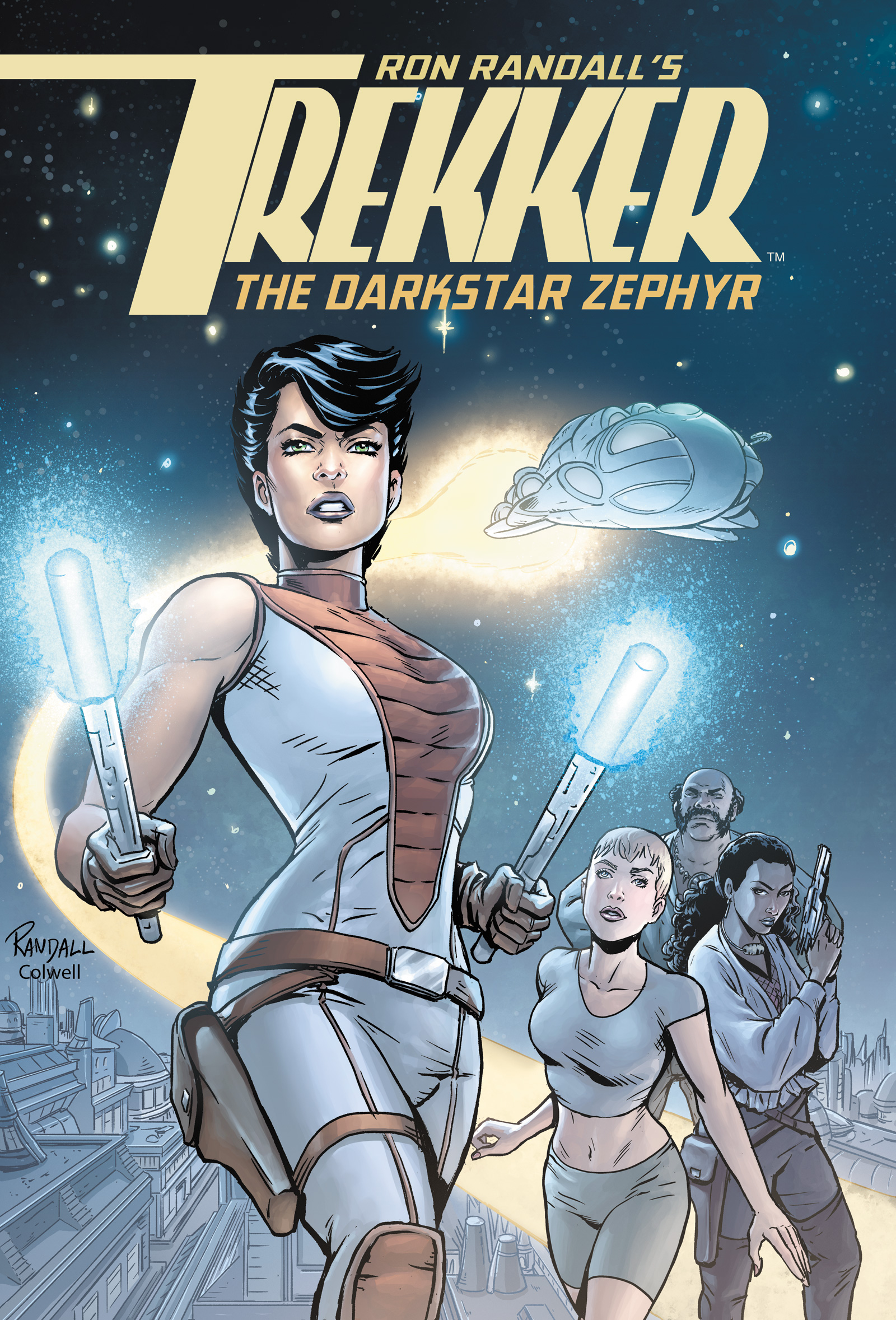

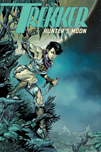
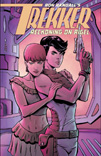

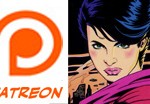

 AL WILLIAMSON
AL WILLIAMSON JEREMY COLWELL
JEREMY COLWELL JOE KUBERT
JOE KUBERT MARK SCHULTZ
MARK SCHULTZ PAUL CHADWICK
PAUL CHADWICK PERISCOPE STUDIO
PERISCOPE STUDIO RonRandall.com
RonRandall.com THOMAS YEATES
THOMAS YEATES FAMILY MAN
FAMILY MAN MAD GENIUS COMICS
MAD GENIUS COMICS PERILS ON PLANET X
PERILS ON PLANET X QUANTUM VIBE
QUANTUM VIBE THE LAST DIPLOMAT
THE LAST DIPLOMAT THRILLBENT
THRILLBENT TRANSPOSE OPERATOR
TRANSPOSE OPERATOR
Cool! I love peering “behind the curtain” to see the creative process. So, have you always worked this way? Have you always wanted to write as well as draw, or is writing a new thing for you? I remember your work on Barren Earth (in Warlord) and it seems to me that you contributed quite a bit to the stories there; did you do those “Marvel style” or were you working from a full script?
Thanks, Mike, glad you like the post! To your questions– “Trekker” was the first major comics writing I did professionally, although having been an English as well as Art major, I always had the urge to tell a story. Up until Trekker, my comics writing was confined to a few short stories in the back of DC horror and war books from back in the day and before that prose stories and the comic stories I made up, wrote and drew on my path to becoming a professional. You’re right that on the Barren Earth, Gary Cohn and I worked very closely. All the major ideas and basic story structure were Gary’s, although I contributed some bits here and there. And since we worked in a very organic, plot-style (or “Marvel” style as you say) process I had a lot to do with the pacing and staging of the stories. It was great practice and training for transitioning to building my own series. I’ve been very gratified that as Trekker has gone on, I’ve felt more sure of myself as a writer. I purposely started with smaller-scale stories and have gradually expanded the range and scope of things. That gave me time to get more comfortable and confident as a writer. I now feel ready to move the series forward onto a larger “stage” where the stories will stretch farther and, hopefully, strike deeper as well. And that’s something that was the intent from the very beginning. I hope you’ll keep enjoying the exploration!
Yeah, I thought you’d contributed to the pacing and plotting of Barren Earth, although I can’t remember if you got plotting credit or not (it’s been a while since I read those stories!). I’ve always liked your art (on Warlord and JLE especially), but I find myself liking your writing too. I’ll definitely keep reading!
Comments are closed.